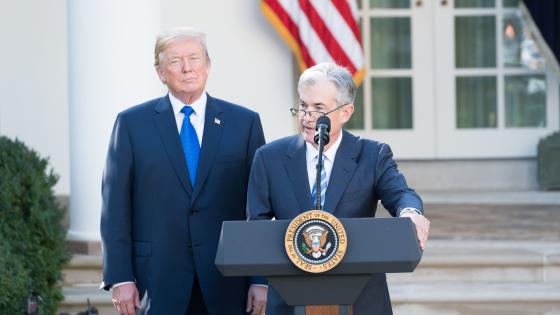“Forward guidance” is communication by a central bank aimed at signalling the likely future path of policy rates. All of the big-3 central banks (the Fed, Bank of Japan and the ECB) have experimented over recent years with more explicit forward guidance through their official communications. Generally it is through the use of “code words,” such as removal of policy accommodation at a “measured pace,” or the exercise of “strong vigilance” toward inflation risks.
At the Fed, at least, there has been a step back from this practice over the past year, with recent FOMC post-meeting statements no longer containing the explicit signals about future policy that had become routine --- and the subject of much scrutiny by market commentators --- in the period between 2003 and 2006. The Bank of Japan (BOJ) has also stopped making definite commitments about future interest rates, since the end of its ‘zero interest-rate policy’ in July 2006. I suspect that other central banks are becoming more cautious as well about the use of code words that are taken to directly indicate future interest-rate decisions, under the current rapidly changeable conditions in financial markets.
The value of talking about the future
Is it in fact appropriate for central banks to try to communicate about future interest rates, or is this a point on which they are better advised to say as little as possible? I think that talking about the likely future course of rates can be quite valuable, at least at certain times. The economic effects of monetary policy depend almost entirely on the anticipated future path of the policy rate, rather than on the current level itself of a rate such as the federal funds rate; announced changes, or non-changes, in the funds rate operating target matter only to the extent that they also often imply changes in the expected path of the funds rate months or even years into the future. Hence it is certainly relevant to a central bank’s stabilization objectives what the private sector understands about the likely forward path of the policy rate; and when the central bank perceives that the private sector has not reached a correct understanding on its own, there is reason for it to seek to clarify matters.
A good example is the situation faced by the Fed in the summer of 2003.1 The funds rate operating target had been reduced to only one percent, and could surely be reduced little further, if at all; market speculation consequently focused on how soon and how sharply rates would be raised again. Indeed, speculation that the Fed would raise rates substantially within a matter of months was already causing long-term interest rates to rise, creating a situation that, it was feared, could actually tip the US economy into deflation. The FOMC could not, or at any rate was certainly reluctant to counter these expectations through any further cut in the current operating target; but instead it was able to calm market fears of an early tightening of rates by explicitly committing to maintain low rates “for a considerable period,” beginning with the statement following its August meeting. Somewhat similar considerations had led the Bank of Japan more than two years earlier to commit itself explicitly to maintain its zero-interest-rate policy until deflation had clearly ended, and also in that case the policy signalling facilitated policy objectives by helping to keep long-term interest rates low.2
While explicit discussion of the level of interest rates that is expected to be chosen at future meetings can be useful on occasions like those just mentioned, it is clearly not possible under all circumstances to expect that interest-rate decisions will invariably be signalled many months in advance. The events of the past fall, in which central banks have had to keep abreast of rapidly changing market conditions --- and in which they have needed to be free to announce changes in policy, precisely because of their concern to respond to perceived changes in market expectations --- have for obvious reasons made central banks reluctant to announce in advance what they might or might not wish to do even a few weeks later.
Learning from the smaller central banks
Does this mean that there is no useful way for central banks to communicate about future policy? Here as in other respects,4 I think that banks like the Fed have much to learn from the communications policies of the forecast-targeting central banks. Banks like the Reserve Bank of New Zealand (for the past decade), joined more recently by the central banks of Norway and Sweden as well, include quantitative projections for the future path of the policy rate along with the projections for inflation and real activity that are discussed in their Monetary Policy Reports. These quantitative projections have a number of advantages over the use of “code words” as practiced by banks like the Fed, the ECB, or the BOJ. One is the simple fact that they are much less ambiguous. But another is that they clearly represent forecasts, conditional on what is known at the time of the forecast, rather than advance commitments of policy --- whereas the code words have frequently been understood as announcements of policy intentions, and have had to be kept ambiguous precisely so as to reduce the extent to which future policy decisions can be regarded as having already been announced. An interest-rate fan chart, of the kind published by the Norges Bank or the Riksbank, does not suggest anything of the kind. It is published alongside similar fan charts for other variables, which clearly represent forecasts rather than promised outcomes. Moreover, these are not single paths; the widening of the probability distributions with the forecast length makes it clear that no specific outcome is being promised in advance.
Would it work in the US?
Could a similar approach be adopted by the Federal Reserve? The FOMC is already publishing a summary of the FOMC members’ forecasts for several other variables. And these forecasts are supposed to be made under each member’s assessment of “appropriate monetary policy”; conceptually, at least, it would be a relatively small step to ask each member to describe his or her projected path for the federal funds rate under the assumption of “appropriate monetary policy” as well. If, for example, such a procedure had already been in place in the summer of 2003, the publication of projections indicating a substantial degree of unanimity among FOMC members about the judgment that the funds rate would remain at or near one percent through the following summer would have achieved the same end as the commitment to “a considerable period” of accommodation --- and it would likely have been even more effective, as a consequence of its greater precision.
Would this run the risk of requiring FOMC members to commit themselves far in advance to particular interest-rate decisions? I think it could be done in a way that would create little expectation of that kind. Stressing the conditionality of the projections on data available at the time would be important; and over time, as the discussion of reasons for each meeting’s projections to differ from those made at the previous meeting become a routine part of each “Summary of Economic Projections,” this should become well understood by readers of the Summary. And allowing for changes in policy in response to developments that could not previously be forecasted is as much flexibility as any committee member should seek; in fact, advance commitment of policy, to the extent that things work out in the way that had previously been anticipated, should lead to superior policy decisions, as a decision in advance of this kind leads the policymaker to internalize the consequences of policy anticipations.
The risks of misunderstanding would also be reduced if policymakers announced confidence intervals for their projections, rather than point forecasts. This is a weakness of the format currently used for the FOMC’s “Survey of Economic Projections,” which emphasizes the distribution of views across committee members, but not the degree of uncertainty associated with each of these forecasts. The current questionnaire does, however, solicit rough assessments of uncertainty from each member, and this could be extended and used to present the forecasts in a way that further emphasized their uncertainty.
Even more to the point would be to clarify the contingency of the projections by providing more information about the kind of possible future developments that should be expected to affect future policy. To some extent, this can be achieved by explaining the general framework within which policy decisions are made --- something that forecast-targeting central banks say a good deal about, though the Fed’s “enhanced” communication strategy still seeks to avoid any explicit statements about this, as I discussed in first column .
Discussion of alternative scenarios
I believe that it would also be useful to illustrate the general policy strategy by talking through particular alternative scenarios and how the FOMC would expect to respond should they occur. The questionnaire used to solicit the forecasts of FOMC members could be expanded to ask them to comment on a small number of alternative scenarios, and not simply on their view of the most likely evolution given current knowledge. In fact, since the Board staff currently prepares its own projections under several alternative scenarios, and circulates these for discussion prior to each meeting, it would only be necessary to solicit the FOMC members’ views of the scenarios that they are already asked to consider. A summary of views of appropriate policy under each of the scenarios could then be included in the “Summary of Economic Projections” in the published minutes of the FOMC meeting.
Conclusions
Extension of the “enhanced projections” in this way would improve the private sector’s ability to predict Fed policy, for at least two reasons. First, it should make FOMC members more comfortable talking about the interest-rate paths associated with their projections, by making it clear that several scenarios are possible. And second, discussion of multiple scenarios should also help people in the private sector understand how the outlook for policy should be affected by at least some of the kinds of news that may arrive between publications of the projections. But at the same time, discussion of the appropriate response to alternative scenarios should also help to clarify the nature of the FOMC’s longer-run policy objectives. In this way, it should also serve the purpose of stabilizing medium-to-longer run expectations. One hopes that an evolution of the policy along lines of this sort will be considered by the FOMC, as it gains further experience with its new communications policy.
Editors’ note: this is the second of 2 columns based on Woodford’s comments at the American Economic Association meeting last weekend in New Orleans.
Footnotes
1 For further discussion, see Michael Woodford, “Central-Bank Communication and Policy Effectiveness,” in The Greenspan Era: Lessons for the Future, Kansas City: Federal Reserve Bank of Kansas City, 2005.
2 For empirical evidence of the effects of the BOJ’s communications policy, see Nobuyuki Oda and Kazuo Ueda, “The Effects of the Bank of Japan’s Zero Interest Rate Commitment and Quantitative Monetary Easing on the Yield Curve: A Macro-Finance Approach,” Bank of Japan working paper no. 05-E-6, April 2005.
3 For further discussion, see Michael Woodford, “The Case for Forecast Targeting as a Monetary Policy Strategy,” Journal of Economic Perspectives, Fall 2007, pp. 3-24, and my previous column, “The Fed’s ‘Enhanced’ Communication Strategy: Stealth Inflation Targeting?,” on VoxEU.org..


